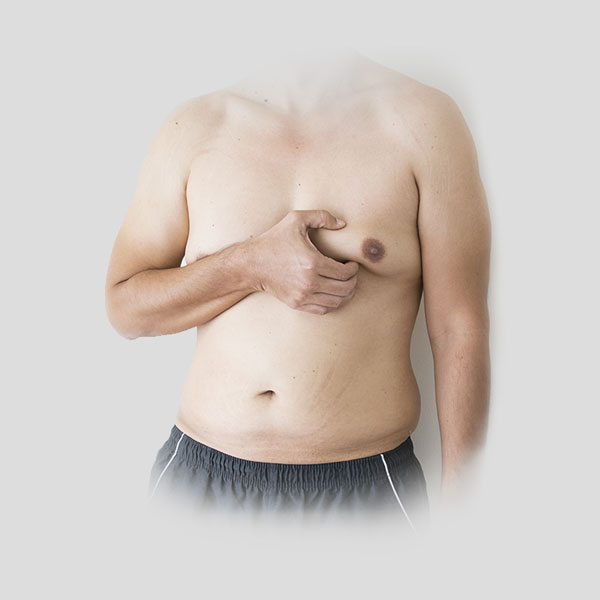Gynecomastia Houston (Male Breast Reduction)
What Is Gynecomastia?

What Are the Signs of Gynecomastia?
What Causes Gynecomastia?
Gynecomastia can have several causes:
Hormone Imbalance–Gynecomastia can be caused by an imbalance between the sex hormones testosterone and estrogen. Estrogen causes breast tissue to grow. While all men produce some estrogen, they usually have much higher levels of testosterone, which stops the estrogen from causing breast tissue to grow.
If the balance of hormones in the body changes, this can cause a man’s breasts to grow. Sometimes, the cause of this imbalance is unknown.
Obesity–Some growth in breast tissue is not due to extra body fat from being overweight, so losing weight or doing more exercise may not improve the condition. However, a common reason for gynecomastia is that being very overweight (obese) can increase levels of estrogen, which can cause breast tissue to grow.
Puberty–During puberty, boys’ hormone levels vary. If the level of testosterone drops, estrogen can cause breast tissue to grow. Many teenage boys have some degree of breast enlargement. Gynecomastia at puberty usually clears up as boys get older and their hormone levels become more stable.
Older Age–As men get older, they produce less testosterone. Older men also tend to have more body fat, and this can cause more estrogen to be produced. These changes in hormone levels can lead to excess breast tissue growth.
Other Causes–In rare cases, gynecomastia can be caused by:
- Side effects of medication, such as anti-ulcer drugs or medication for heart disease
- Illegal drugs, such as cannabis or anabolic steroids
- Drinking too much alcohol
- A health abnormality, such as kidney failure or liver disease
- Klinefelter’s syndrome (a rare genetic disorder)
- Lumps or infections in the testicles





